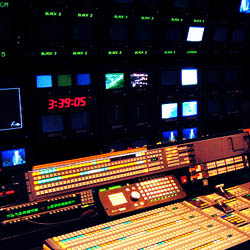
So, I continue working through the film doing a little bit of everything until it’s done (not finished).
At that point I turn my attention to mixing. That usually generates a few more notes from the director.
Finally, after many versions everybody is satisfied, except one person who always hates one aspect of the soundtrack – a line, a music choice … there’s always one.
A note about the mythical beast known as “Picture Lock“. I prefer to start the sound work after the picture is done and locked. Sync changes are hard to conform.
But directors like to fiddle. And they do. . .
In fact, as the soundtrack comes together they often see (and hear!) the film in a new way.
That gets their creative juices flowing. And so they make changes. A trim here. A shot swap here. A delete-a-line there. Oh my.
So periodically I need to regenerate the OMFs, get a new video file, and conform these changes. This usually takes a day.
And it’s scary! Directors and picture editors often forget that changing a couple of tracks in an NLE is easy. It’s not so easy when you have 85+ audio tracks!
This is a primary reason why I never do track automation until the end because it’s the one thing that often gets severely messed up during a sync conform. I leave the real mix automation to the premix or more often the final mix!
Hopefully you’ve founnd this workflow walk-through useful. If you have any particular tips on your own methods, please feel free to share them in the comments below.
Jeffrey P. Fisher provides audio, video, music, writing, consulting, training, and media production and post-production services for individuals, corporate, and commercial clients through his own company, Fisher Creative Group. He also writes extensively about music, sound, and video for print and the Web and has authored numerous books and training DVD’s.
